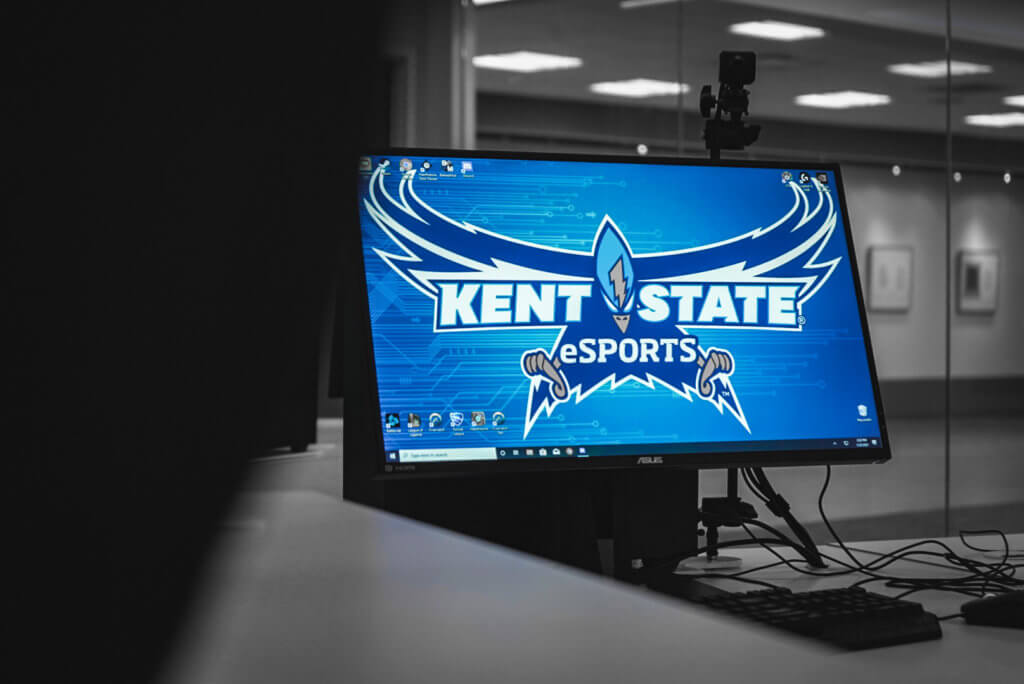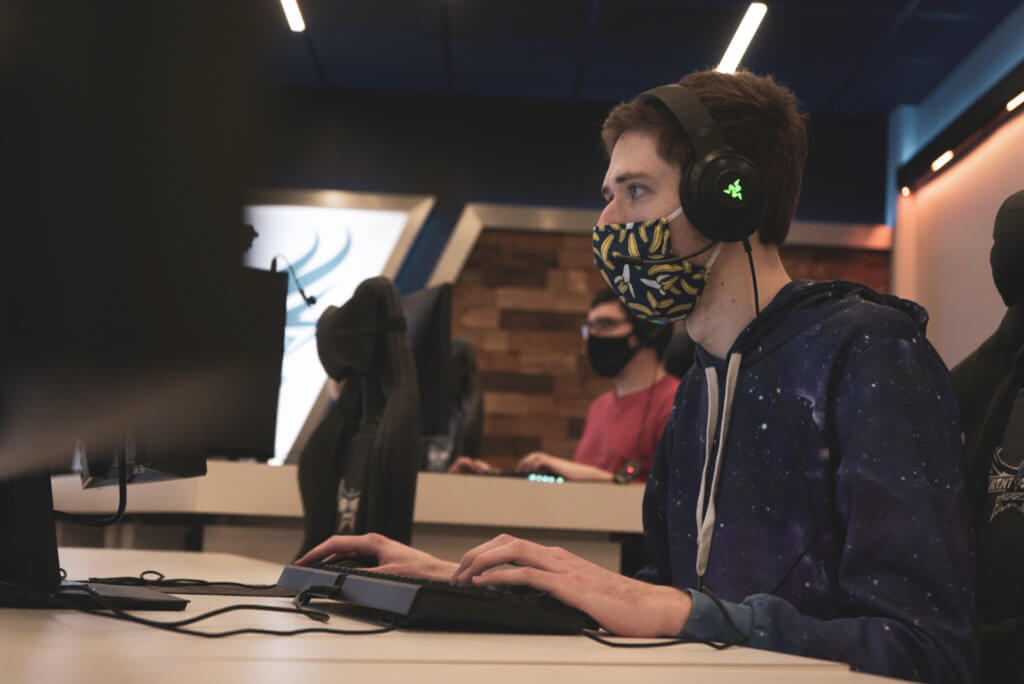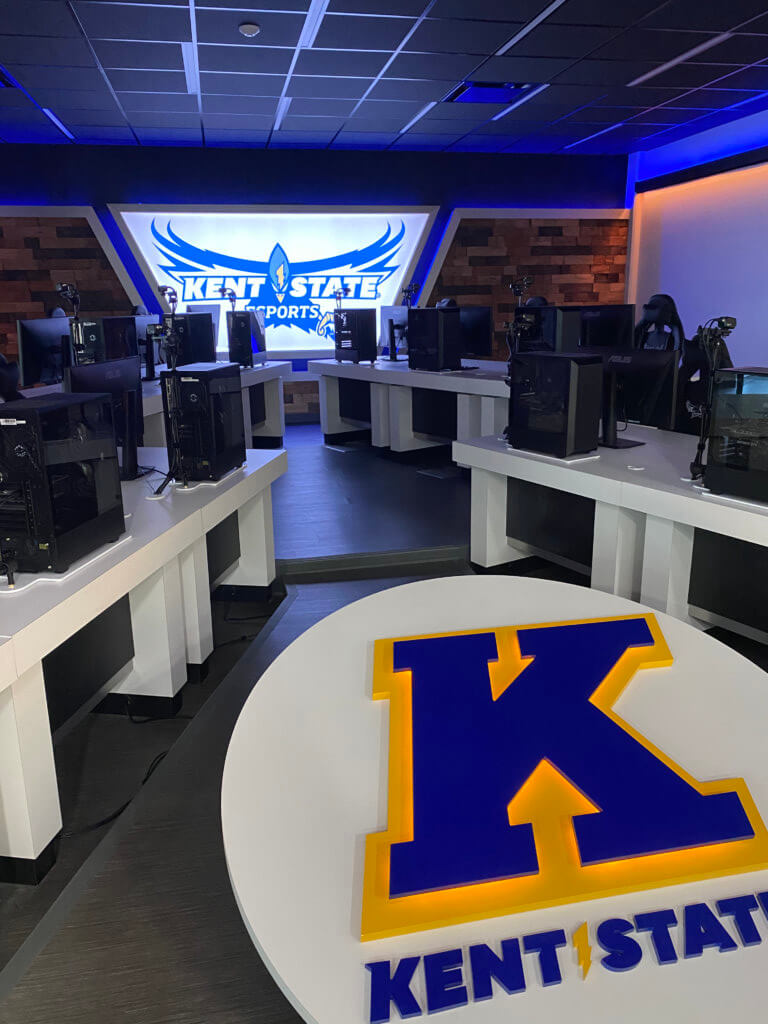
Image courtesy of Kent State
Across the higher education landscape the excitement around esports is palpable. This is especially true in IT departments, as collegiate gaming builds student interest in technology related careers, making networking professionals keen to supply the necessary infrastructure for esports programs to thrive.
We recently spoke with IT representatives from two institutions with esports programs, Texas A&M University and Kent State University. Each provided sage advice regarding the types of wired and wireless networking solutions, features and functionality they rely on for delivering the esports experiences their students expect today and will want tomorrow.
Texas A&M’s Wi-Fi flexibly supports club play
With esports interest heating up prior to the COVID-19 pandemic, the IT department at Texas A&M’s College Station campus began receiving requests from the institution’s esports club for ad hoc network connectivity. One competitive event required Wi-Fi access for 400 users.
As Gary Krueger, the Senior Lead Networking Engineer at Texas A&M explains it, the scalability and flexibility of his institution’s Aruba wireless network was critical to meeting this new need.
“The competition was held in a large ballroom within our Memorial Student Center,” he says. “We were able to quickly mount our Aruba APs on tripods, plug them into the network, and, within minutes, the set-up was ready to go.”
Now, the post-pandemic return of students to campus and classrooms suggests the university’s esports club will increase their active participation and team rosters, resulting in hosting ever-larger events with greater networking demands.
“Even if we’re asked to accommodate 10 times the number of participants we’re confident our Aruba Wi-Fi will deliver the desired experiences,” says Krueger.
In addition, Krueger anticipates adding Aruba’s User Experience Insight (UXI) sensors to future ad-hoc esports deployments.
“With the UXI sensors we can test experiences on different types of devices prior to an event, which will help us proactively resolve any DHCP, DNS, or other connectivity challenges before users arrive,” he says. “And, during the competition, UXI can help provide us with visibility for rapidly troubleshooting any issues that might arise.”

Image courtesy of Kent State
Kent State fields varsity, JV and club gaming in new esports arena
Further along on the esports spectrum is Ohio’s Kent State, which is a founding member of the Esports Collegiate Conference. The university currently fields varsity and junior varsity teams that compete across five gaming tiles including Hearthstone, League of Legends, Overwatch, Rocket League, and Valorant. Each of the 50 team members, who are eligible for scholarships, gained their berth via tryouts that have drawn between as many as 350 prospects including admitted, transfer, international and high school students.
The University also maintains a large esports club with 1000 members, including current students, alumni, high school students, and college students from other North American schools. Most recently, the club fielded 15 teams that competed across various gaming titles.
Academic courses and experiential opportunities across an array of esports-related disciplines are also under development by Kent State’s College of Communication and Information, the gaming program’s parent.
According to James Raber, Executive Director of Information Services Educational Technology & Service Management at Kent State, the esports program’s mission is creating an environment that is open to everyone interested in gaming, “whether that is competitive, club, careers, or just for fun,” he says.
For the program’s on-campus presence, Kent State recently completed a dedicated arena that includes an adjoining spectator area. Designed as the program’s hub, the arena doubles as the team’s practice field and academic environment with office space for professors, coaches and managers.
Adjacent to the arena is the university’s professional media production and broadcasting studio, enabling varsity events to be live streamed on Twitch as well as to video displays in the spectator area. The proximity of the two spaces enables Kent State’s esports program to offer hands-on opportunities for broadcast journalists, sports commentators and producers as well as gamers.

Image courtesy of Kent State
Aruba powers competitions and media broadcasts
To build a future-proof wired and wireless solution to support both the esports arena, the IT team worked closely with esports and media production representatives.
“Because we maintain good communications with our departments and users, representatives from both programs brought us their goals and vision for the arena,” explains Michael Geist, Manager of Network and Telecommunications at Kent State. “After meeting with them, we researched the future of high-definition gaming, broadcasting and live streaming to determine the right infrastructure.”
On the wired side, university was standardizing on Aruba CX Switches for their AI-enabled automation and intuitive management tools along with the ability to provide high-performance bandwidth. Given the expected future needs, IT determined two 10GbE CX switches, for redundancy, were required.
Wired administration tools like NetEdit were also key for powering current esports needs and the expected program growth.
“Using NetEdit we’ve written a procedure for deploying switches, enabling a student to configure switches without any intervention from a network engineer,” Raber says. “This maximizes our intellectual resources, serves as a learning opportunity for students, makes us more agile, and enables us to scale rapidly, such as for esports, without disrupting users.”
For wireless, Kent State is standardizing on Aruba’s Wi-Fi 6 access points (APs) to deliver exceptional fan experiences, including enabling real-time social media streaming, as well as prepare for wireless gaming in future.
“We know wireless gaming is very popular internationally,” Geist says. “With our Wi-Fi 6 APs we anticipate having the capability to support this activity as it gains popularity here.”
Unifying and streamlining NAC for zero trust security at scale
Keeping gaming and broadcasting traffic secure while reducing administrative overhead was another Kent State requirement. To do so, the institution is unifying wired and wireless network access control (NAC) with Aruba’s ClearPass Policy Manager, which delivers zero trust security capabilities such as role-based access and real-time policies governing how users and devices connect as well as what they can access.
Additionally, institutions like Kent State can integrate ClearPass with the CX switching family to unify policy enforcement across wired and wireless networks via Aruba’s Dynamic Segmentation.
No matter which wired and wireless management tools Kent State utilizes, Raber’s team is confident their network will support the expected competitive and academic growth of esports.
“The members of our program plan to continue competing at the highest level in both club and varsity gaming,” Raber says. “Simultaneously, the program will be expanding career experiences, academic course offerings, and real-world opportunities for students to learn how their passion can lead to a technology career.”
For more on how Aruba’s K-12 and higher education esports solution can help your institution, check out the Esports in Education Solution Overview, here.




